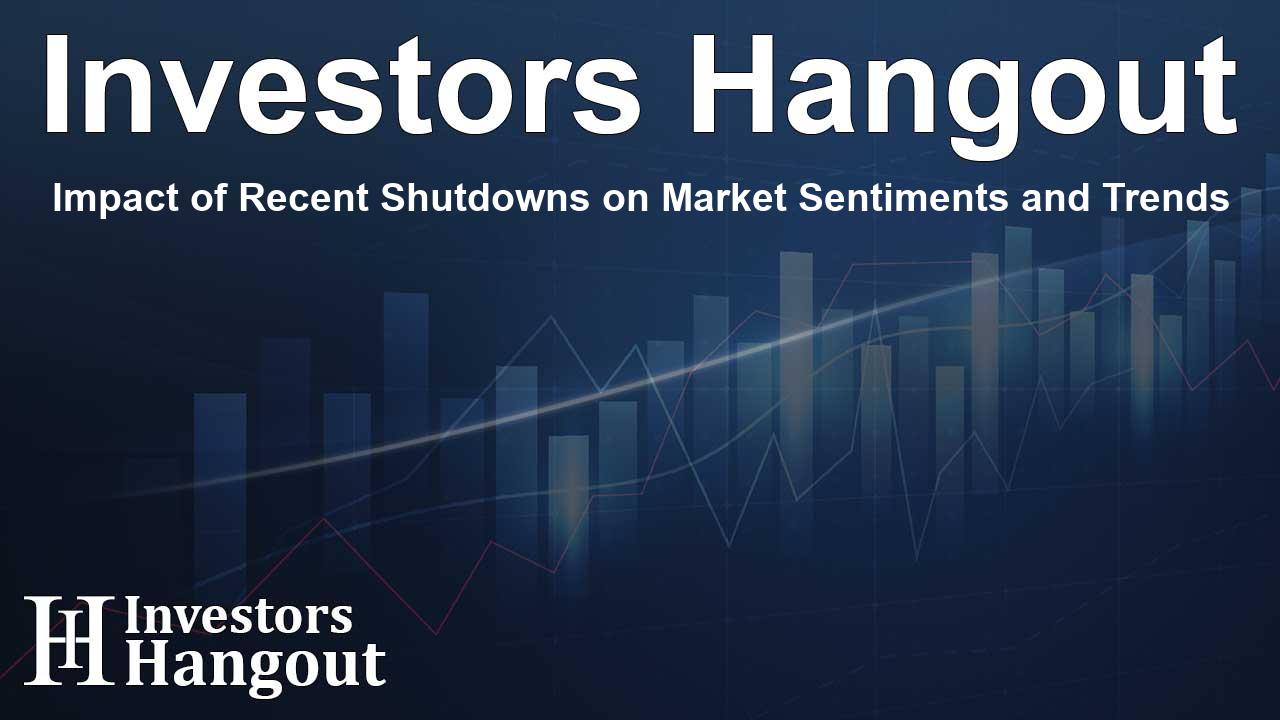Impact of Recent Shutdowns on Market Sentiments and Trends

Understanding Shutdowns and Their Market Impact
The recent U.S. shutdown elicited a surprising response from the markets. As traders navigated Day 1, they appeared unfazed, with major indexes showcasing resilience. For instance, the Dow Jones gained 0.17%, the S&P 500 edged up by 0.06%, while the Nasdaq climbed 0.39%. Even with slight gains, the VIX, which is often seen as a measure of market volatility, rose by 2.1% to reach 16.63. This behavior can be puzzling, yet it reflects a historical trend where markets tend to remain stable or even gain during shutdowns.
Shutdowns Prove Resilient
History offers interesting insights into how the markets typically react during shutdowns. For example, past data indicates that the S&P 500 often posts flat or slightly positive performance during such periods. Over time, it has shown an average gain of about 0.6% in the week following a shutdown. This resilience was notably evident during the historic 34-day shutdown in 2018, where the S&P 500 surged by an impressive 10%, demonstrating that investors often view shutdowns as opportunities to 'buy the dip' (BTD) rather than as harbingers of long-term market downturns.
Intel's Resurgence
Amidst this backdrop, Intel Corporation (NASDAQ: INTC) is making a commendable comeback as a key player in the U.S. semiconductor industry. The recent focus on domestic manufacturing of chips has bolstered Intel’s position, enhancing its role in the nation’s tech landscape. Chip supply chains are gradually shifting back to domestic production, which is not only pivotal for Intel but also serves as a positive indicator for overall economic growth. Over the last month, Intel's stock has appreciated significantly by 55%, reflecting strong investor confidence. Additionally, the GraniteShares 2x Daily Leveraged Intel ETF (NASDAQ: INTW) has skyrocketed by 126% during the same timespan, underscoring the bullish sentiment surrounding the company.
Future Rate Cuts and Market Strategies
Looking ahead, traders are increasingly optimistic about multiple rate cuts from the Federal Reserve, with some speculating on a potential fourth cut. Such a dovish stance from the Fed is likely to amplify demand for small-cap stocks and speculative ventures, fostering a vigorous risk-on environment. In particular, stocks like Eos Energy Enterprises (NASDAQ: EOSE) and BitMine Immersion (AMEX: BMNR) are catching investor attention as they capitalize on increased liquidity flows. These stocks, which thrive on market conditions that favor risk-taking, stand to gain significantly if the Fed continues on this path.
The Broader Market Perspective
The implications of rate cuts are vast, affecting a wide range of sectors. Typically, when interest rates are low, borrowing becomes cheaper, which can spur investment and consumer spending. Small-cap stocks, known for their potential high growth, are particularly sensitive to such monetary policy shifts. The positive sentiment following potential rate cuts suggests enhanced trading activity in speculative or innovative sectors where companies like Strategy Inc (NASDAQ: MSTR) thrive. Overall, as the market adjusts to these changes, a flurry of trading activity around emerging technologies and alternative energy solutions is expected.
Frequently Asked Questions
1. How do shutdowns typically impact the stock market?
Historically, shutdowns have resulted in flat or slightly positive market performance, with gains often seen in the weeks following a shutdown.
2. What is Intel's current market position?
Intel is regaining its prominence as a key player in the U.S. semiconductor industry, with a significant increase in stock prices over the past month.
3. What should investors watch for regarding rate cuts?
Investors should be attentive to Fed signals regarding future rate cuts, as these could impact market liquidity and investment opportunities.
4. What is the significance of the GraniteShares 2x Daily Leveraged Intel ETF?
This ETF has seen a notable surge due to Intel's resurgence, reflecting strong investor sentiment towards the semiconductor sector.
5. How do market trends during shutdowns affect small-cap stocks?
Market trends during shutdowns can enhance small-cap stocks' performance, especially when accompanied by favorable monetary policies.
About The Author
Contact Evelyn Baker privately here. Or send an email with ATTN: Evelyn Baker as the subject to contact@investorshangout.com.
About Investors Hangout
Investors Hangout is a leading online stock forum for financial discussion and learning, offering a wide range of free tools and resources. It draws in traders of all levels, who exchange market knowledge, investigate trading tactics, and keep an eye on industry developments in real time. Featuring financial articles, stock message boards, quotes, charts, company profiles, and live news updates. Through cooperative learning and a wealth of informational resources, it helps users from novices creating their first portfolios to experts honing their techniques. Join Investors Hangout today: https://investorshangout.com/
The content of this article is based on factual, publicly available information and does not represent legal, financial, or investment advice. Investors Hangout does not offer financial advice, and the author is not a licensed financial advisor. Consult a qualified advisor before making any financial or investment decisions based on this article. This article should not be considered advice to purchase, sell, or hold any securities or other investments. If any of the material provided here is inaccurate, please contact us for corrections.
